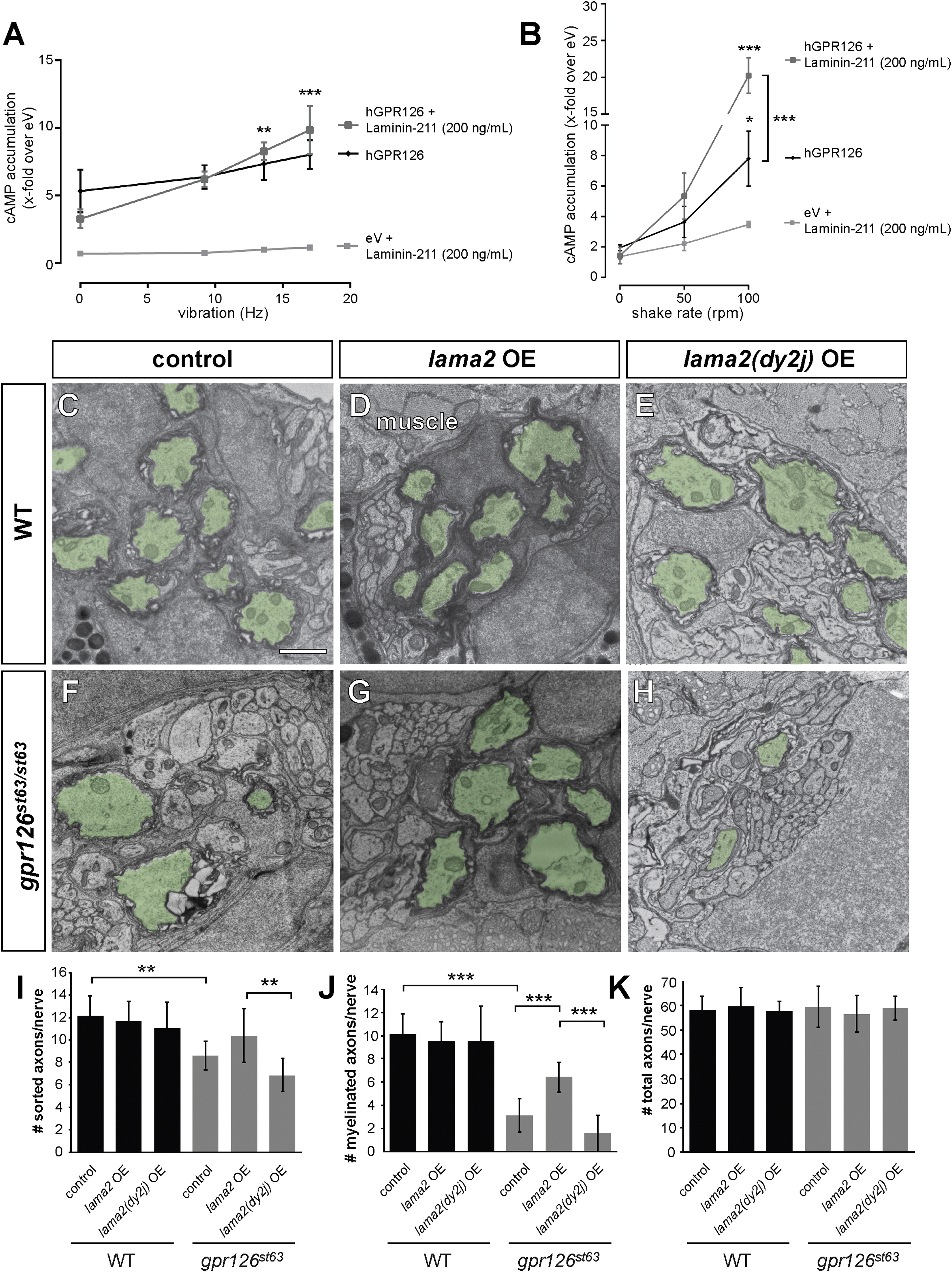Fig. 6
Laminin-211 Activates Gpr126 under Dynamic Conditions In Vitro and Polymerizing Conditions In Vivo
(A and B) COS-7 cells were transiently transfected with empty vector (eV) and hGPR126 plasmid. cAMP accumulation was measured after stimulation with Laminin-211 (200 ng/ml) and the indicated force. Data are represented as mean ± SEM of three independent assays each performed in triplicate. p < 0.05, p < 0.01, p < 0.001, two-way ANOVA with Tukey’s multiple comparisons test (each mechanic-induced response was compared to static conditions for all hGPR126 data points, with and without Laminin-211).
(A) Laminin-211 suppresses GPR126 signaling under stationary conditions (Hz 0) but causes a frequency-dependent increase of cAMP accumulation with increasing vibration.
(B) Mechanical stimulation via shaking further enhances Laminin-211-dependent cAMP accumulation with increasing frequency.
(C–H) TEM of 5 dpf zebrafish PLLn. Myelinated axons are pseudocolored in green. The scale bar represents 1 µm.
(C–E) Myelination proceeds normally in a control larva (C), in a larva injected with 40 pg WT lama2 OE construct (D), and in a larva injected with 40 pg mutant lama2(dy2j) OE construct (E).
(F) Myelination is reduced in a control-injected gpr126st63/st63 larva.
(G) Injection of 40 pg lama2 OE rescues myelination in a gpr126st63/st63 larva.
(H) Injection of 40 pg lama2(dy2j) OE fails to rescue myelination in a gpr126st63/st63 larva.
(I–K) Quantification of TEM images. Bars represent means ± SD. p < 0.01, p < 0.001, one-way ANOVA with Bonferroni’s multiple comparisons test.
(I) Number of sorted axons per PLLn.
(J) Number of myelinated axons per PLLn.
(K) Number of total axons per PLLn.

